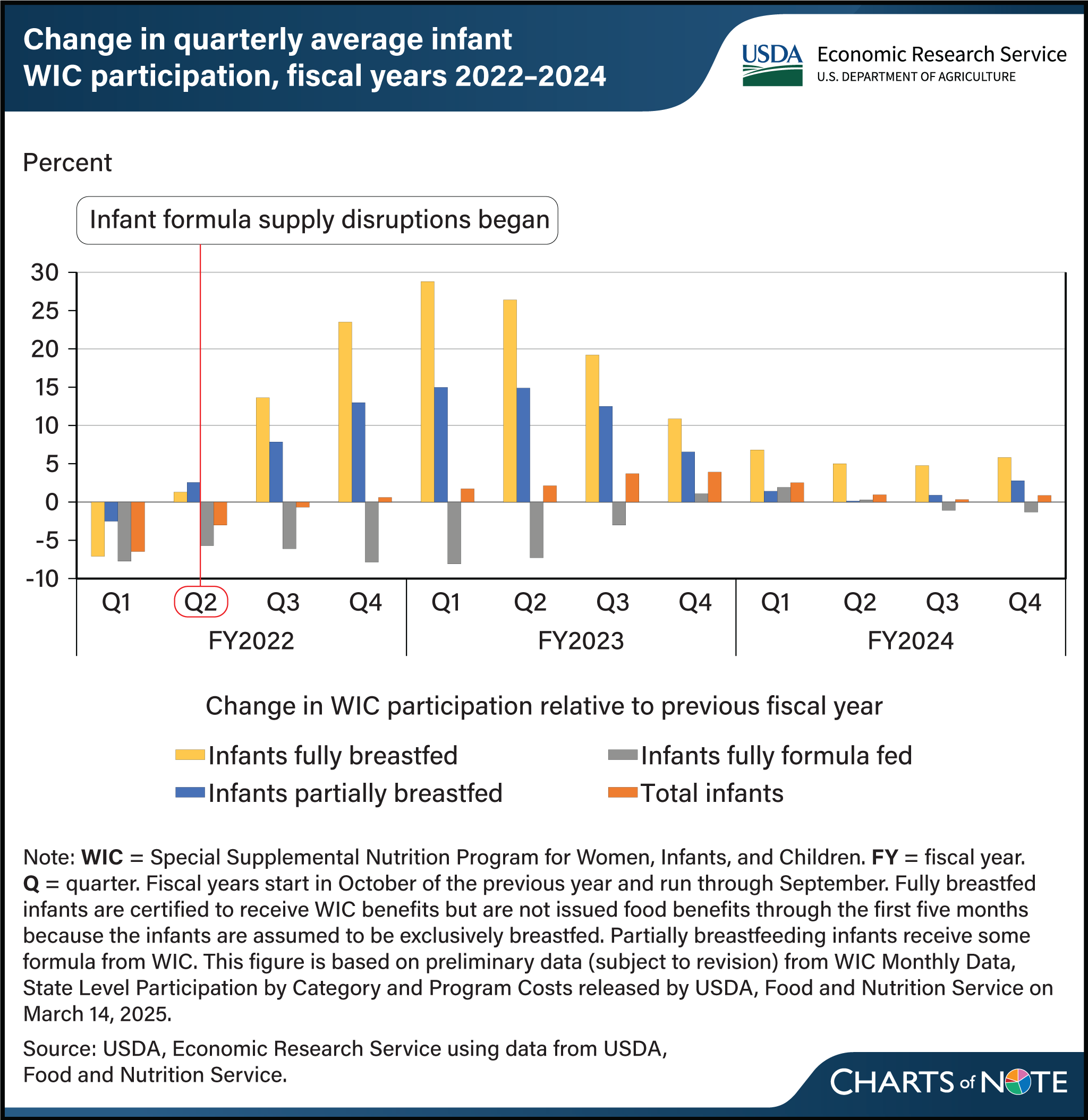Breastfeeding in WIC program continued to increase in fiscal year 2024
- by Jessica E. Todd and Leslie Hodges
- 4/24/2025

The number of breastfed infants in USDA’s Special Supplemental Nutrition Program for Women, Infants, and Children (WIC) continued to increase in fiscal year 2024, but at a slower rate than immediately after the 2022 infant formula supply chain disruptions. Quarterly averages of monthly WIC participation levels provide insights into how the infant caseload has evolved in recent years. The total number of infants participating in WIC was falling in the first quarter of FY2022 (October–December 2021) compared with the previous year, but this changed after the infant formula supply disruptions that began in February 2022. By the fourth quarter of fiscal year 2022 (July–September), the number of fully formula-feeding infants decreased nearly 8 percent from the year before, while the number of partially breastfed infants increased 13 percent, and the number of fully breastfed infants increased almost 24 percent. The increase in the numbers of breastfed infants continued in fiscal years 2023 and 2024. Compared with the first quarter of fiscal year 2022, the number of fully breastfed infants participating in WIC in the fourth quarter of fiscal year 2024 (245,604) was 45 percent higher, and the number of partially breastfed infants participating in WIC (400,101) was 21 percent higher. In contrast, 857,225 infants participating in WIC were fully formula-fed, a decline of 6 percent over the same period, for a net increase of 6 percent in the total infant caseload. This chart updates information in the USDA, Economic Research Service report The Special Supplemental Nutrition Program for Women, Infants, and Children: Background, Trends, and Economic Issues, 2024 Edition, published in February 2024.

